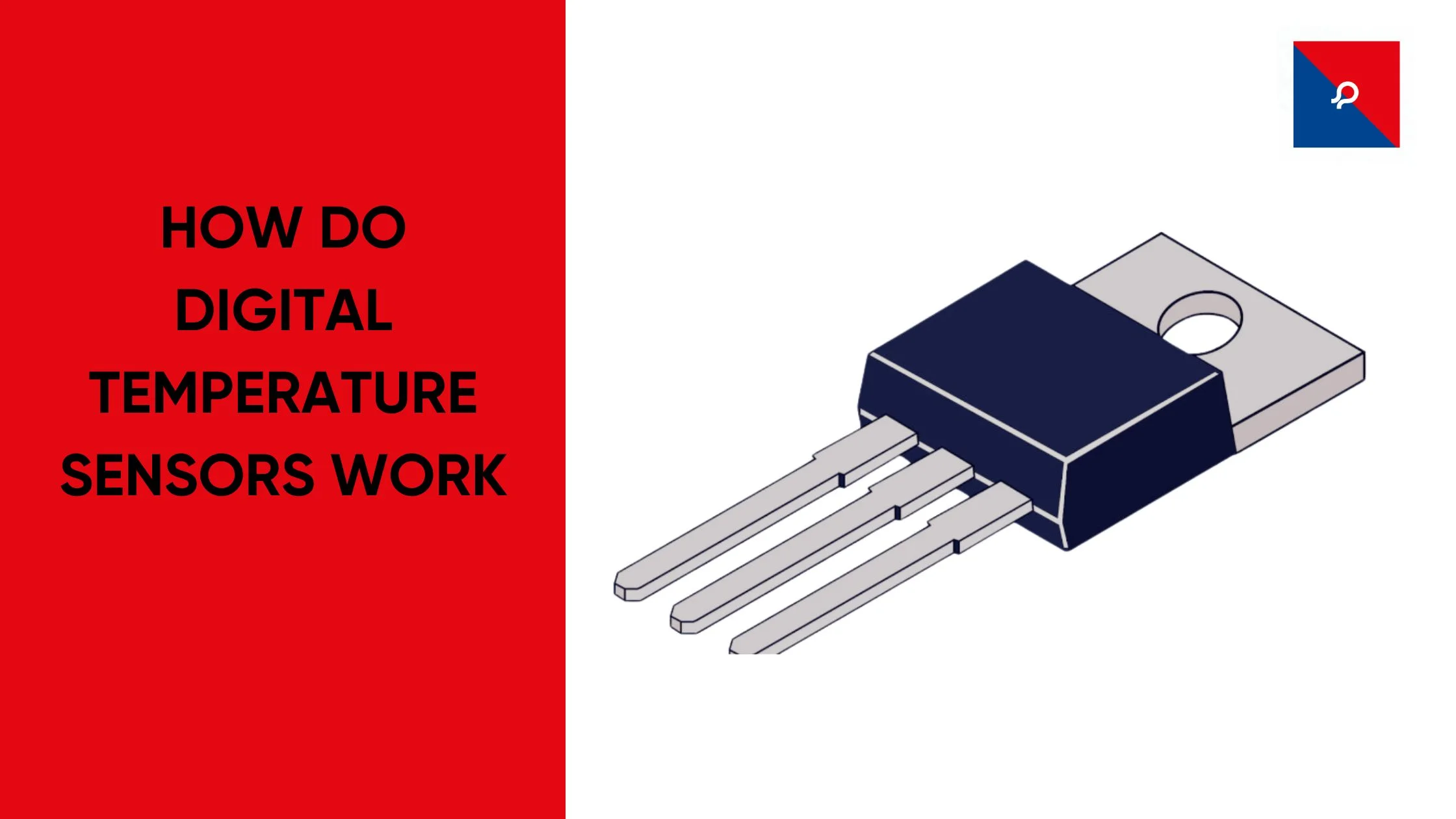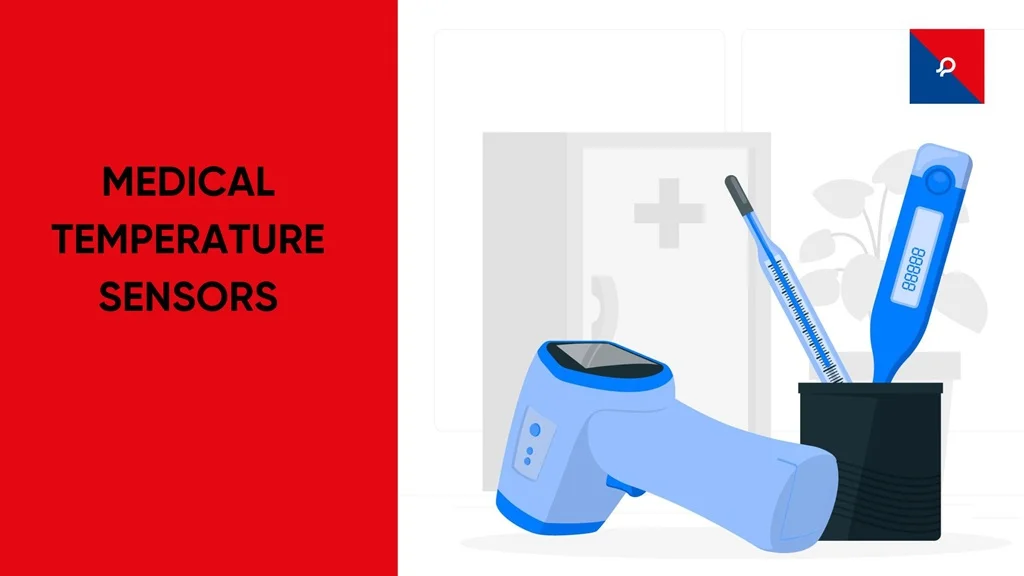
Temperature sensing forms an integral part of many industries such as health care, industrial automation, environmental monitoring, and consumer electronics. Digital temperature sensors are the modern-day solutions to accurate and precise as well as reliable temperature readings. Unlike analog sensors, which produce a continuous signal, digital sensors output temperature data in a digital format so that it can smoothly be directed with a digital system.
Using semiconductor-based component technologies to detect temperature change, this type of sensor converts the analog signal to digital data through the action of an Analog-to-Digital Converter (ADC). Thus, apart from the high accuracy and noise immunity, they show easy interfacing with microcontrollers and computers.
Medical, automotive, or smart home applications serve as daily examples of real digital temperature sensors. Small in size with internal data processing, this makes them perfect candidates for IoT applications. The ongoing development of these technologies has brought about the emergence of digital temperature sensors to enhance performance and safety within industries.
What is a Digital Temperature Sensor?
A digital temperature sensor typically refers to an advanced electronic device that takes part in temperature measurements, giving its output in a digital format. Unlike analog sensors that continuously output voltage or change resistance concerning the temperature, digital temperature sensor readings are finally digitized signals without requiring further conversion circuitry, hence facilitating easy processing and transmission.
Most digital temperature sensors work on semiconductor technology for temperature measurement. They usually include an integrated Analog-to-Digital Converter (ADC) built directly into the sensor to communicate directly with digital processing systems such as microcontrollers and computers.
These sensors find applications where accurate and swift temperature measurements are required and are used in medical instruments, wherein their readings contribute to the safety of patients, automotive engine management, climate control, and industrial automation. Besides being compact and reliable, digital temperature sensors are also efficient and form an important part of newer technology today.
How Do Digital Temperature Sensors Work?
Digital temperature sensors are semiconductor component-based devices used for measuring temperature. They function by sensing temperature variations, converting that into electrical signals, and finally outputting it digitally.
Key Steps in Digital Temperature Sensor Operation:
1. Sensing Element:
The temperature is generally sensed by a sensing element which may be a diode or thermistor, and its electrical properties (like voltage or resistance) vary according to temperature.
2. Signal Conversion:
This analog signal from the sensing element flows to an Analog-to-Digital Converter (ADC). The ADC will enable this continuous analog signal to be converted as a digital signal corresponding to the measured temperature.
3. Digital Processing:
The integrated microcontroller in the sensor takes care of the processing concerning the digital signal which includes the calibration, correction of nonlinearity, and scaling to end up with accurate readings related to temperature.
4. Output Interface:
Then the effective digital data now will be transmitted through an established standard communication protocol, such as I2C, SPI, or UART. With this, the sensor can directly communicate with other digital devices, such as microcontrollers or computers.
Digital Temperature Sensor Working Principle
The operation of a digital temperature sensor, in principle, stems from viewing the electrical properties based on temperature change and, therefore, transforming it into a digital signal. The working principle can be elaborated as follows:
1. Measurement of temperature:
The temperature change is detected through the change in electrical characteristics of the sensor, such as a change in voltage or resistance by the thermistor, diode, or other similar component.
2. Signal amplification:
The weak analog signal generated by the sensing element is amplified to ensure it is ready for accurate conversion.
3. Conversion of signals (ADC):
The amplified analog signal is fed into an ADC, which quantizes the signal into discrete digital values.
4. Calibration and linearization:
Calibration and linearization are performed on the internal circuitry of the sensor for accuracy on temperature readings.
5. Digital output:
Temperature reading outputs in the form of a digital signal are ready for further processing or display.
Analog vs. Digital Temperature Sensors
Temperature sensors can be classified basically under two categories: analog and digital, with the measure of temperature that both of them obtain certainly differing. However, these temperature detectors differ considerably in their working, output, and applications.
Analogue Temperature Sensors:
- Output: Produces a continuous signal (voltage or current) proportional to the measured temperature.
- Working: Requires additional circuitry, such as amplifiers and ADCs, to process the signal.
- Accuracy: This may require frequent calibration to maintain accuracy.
- Applications: Common in simple systems where digital processing is unnecessary.
Digital Temperature Sensors:
- Output: Provides a digital signal that can be directly processed by microcontrollers or computers.
- Working: Integrates ADC and signal processing within the sensor, reducing the need for external components.
- Accuracy: Offers high precision and stability with built-in calibration features.
- Applications: Used in advanced systems requiring precise and reliable temperature monitoring, such as IoT devices, medical equipment, and automotive systems.
Advantages of Digital Temperature Sensors
- High accuracy: Digital sensors usually have a higher accuracy since they can use internal calibration and compensation for non-linearities.
- Ease of Integration: The sensors can connect directly to microcontrollers or computers via a standard digital interface, simplifying system design.
- Noise Immunity: In fact, noise becomes less of an interference and susceptibility with digital signals as it pertains to intrusion by the electrical disturbance environment.
- Compact and Integrated: But now, most of the digital temperature sensors combine A/D converter ADC and all signal processors inside a single package, thus requiring less space and making it cheap.
- Flexibility: These standard protocols will also allow the digital sensor to connect to any IoT or any other system.
Applications of Digital Temperature Sensors
There are a variety of digital temperature sensors used across many different industries. Some of the common applications include:
- Healthcare: Reading thermometers and incubators to measure patient body temperature.
- Automotives: Temperature control for engines, cabins, and electric vehicle battery management.
- Industrial Automation: Control of processes in manufacturing plants; this includes monitoring machinery and ambient conditions around them.
- Consumer Electronics: Thermal management in decomposition for smartphones, laptops, and game consoles.
- Environmental Monitoring: Monitoring environmental conditions in terms of agriculture, weather stations, and smart houses.
Future Trends in Digital Temperature Sensors
With the advancement of technology, the digital sensor temperature is becoming very intelligent and flexible in use. These include future developments:
- Integration with IoT: Sensors are going to be wireless, for remote temperature monitoring.
- Miniaturization: Sensors shall be small to be used for wearable applications as well as compact electronics.
- High Energy Efficiency: Sensors that could operate with lower enough power consumption to work in battery-operated devices.
- AI-Driven Insights: Temperature data will be merged with the AI for further use in predictive maintenance as well as advanced analytics.
Conclusion
Significant transformation in temperature measurement has occurred with the advent of digital temperature. They hold a promise of additional accuracy, reliability, and simplicity in integration. By understanding their working principles and advantages over analog sensors, a user will make the selection for applications rationally. The evolution of recent technology will continue to pave the way for digital temperature sensors in the industry, bringing efficiency, safety, and innovation.
Frequently Asked Questions
1. What is the difference between analog and digital temperature sensors?
2. How do digital temperature sensors work?
3. Why are digital temperature sensors preferred over analog sensors?
4. What communication protocols do digital temperature sensors use?
5. Where are digital temperature sensors commonly used?

Burnt Biscuits? Blame the Sensor – The Hot Truth About Your Oven’s Temperature Troubles
If your oven’s cooking like it’s got a mind of its own, your temperature sensor might be the silent saboteur. From half-baked casseroles to scorched cookies, we break down how this little sensor works, why it matters, and how to fix it—without losing your cool (or your dinner). A fun, practical guide that’s just as useful as it is digestible.

Hot Stuff: Why Your Engine Can’t Live Without an Exhaust Temperature Sensor
Think exhaust sensors are just another car part? Think again. These tiny guardians track fiery exhaust temps, protect turbos, keep emissions in check—and even help you pass that dreaded test. Dive into the witty, down-to-earth guide on how EGT sensors silently save your engine (and your wallet) every day. Bonus: You’ll sound like a car guru by the end.

Tiny Tech, Big Impact: Inside the World of Medical Temperature Sensors
Discover how medical temperature sensors work, why they're crucial in healthcare, and how health sensors are transforming modern medical diagnostics. From wearable tech to high-precision devices, learn about the different types of temperature sensor medical devices used today.